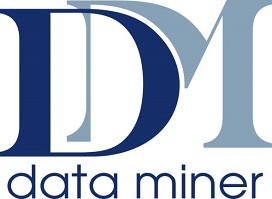Overview
This course will teach you how to build apps with low-code techniques to simplify, automate, and transform business tasks and processes using Microsoft Power Platform.
Please note that this course teaches all areas needed to build Power Apps which includes the Dataverse, Power Automate, Power BI and AI Builder. Learners should take the QA authored course Mastering Power Apps (QAMPAPPS) if they require a course solely on the Microsoft Canvas Apps.
Prerequisites
- Basic data modeling, user experience design, requirements analysis, and process analysis skills.
- A personal growth mindset and are comfortable using technology to solve business problems.
- An understanding of the operational need and have a vision of the desired outcome. They approach problems with phased and iterative strategies.
Delegates will learn how to
- Design Power Apps (Model-driven & Canvas Apps)
- Automate Processes
- Analyse data
- Introduction to AI technology
Outline
Module 1: Create a model-driven application in Power Apps
This module introduces you to creating a model-driven app in Power Apps that use Dataverse.
This module introduces you to creating a model-driven app in Power Apps that use Dataverse.
Module 2: Create a canvas app in Power Apps
This module introduces you to Canvas Power Apps, helps you create and customize an app, and then manage and distribute it.
This module introduces you to Canvas Power Apps, helps you create and customize an app, and then manage and distribute it.
Module 3: Use the UI and controls in a canvas app in Power Apps
This module will focus on how to provide the best app navigation, and build the best UI using themes, icons, images, personalization, different form factors, and controls.
This module will focus on how to provide the best app navigation, and build the best UI using themes, icons, images, personalization, different form factors, and controls.
Module 4: Automate a business process using Power Automate
This module introduces you to Power Automate, teaches you how to build workflows, and how to administer flows.
This module introduces you to Power Automate, teaches you how to build workflows, and how to administer flows.
Module 5: Create and use analytics reports with Power BI
Learn what Power BI is, including its building blocks and how they work together.
Learn what Power BI is, including its building blocks and how they work together.
Module 6: Get started with AI Builder
This module demonstrates how to build an AI model from the beginning and shows how to use it in your business without writing a single line of code.
This module demonstrates how to build an AI model from the beginning and shows how to use it in your business without writing a single line of code.

